Our Blog - AugustTrip - Week 2
Week 2 of our vacation was spent in Southeast England. After exiting the tunnel, we made our way to Broadstairs, where we had rented a holiday cottage for the week. I was actually quite nervous about driving our left-hand-drive car in a country where the roads are for right-hand-drive cars. I had driven in the UK before, on the "other" side of the road, but always with a rental car with the driver on the "other" side of the car as well. But with the small piece of advice from a friend (always keep the sidewalk on YOUR side of the car), I didn't have any issues at all.
When in England ... well ... let's just say that we drank lots of beer and cider, and ate lots of Fish and Chips! One brand that I found I liked was Old Mout. It was started in New Zealand and the flavors were inspired by fruits from down under. They are now produced in the UK and, I just admit, I drank quite a few of these during week 2.
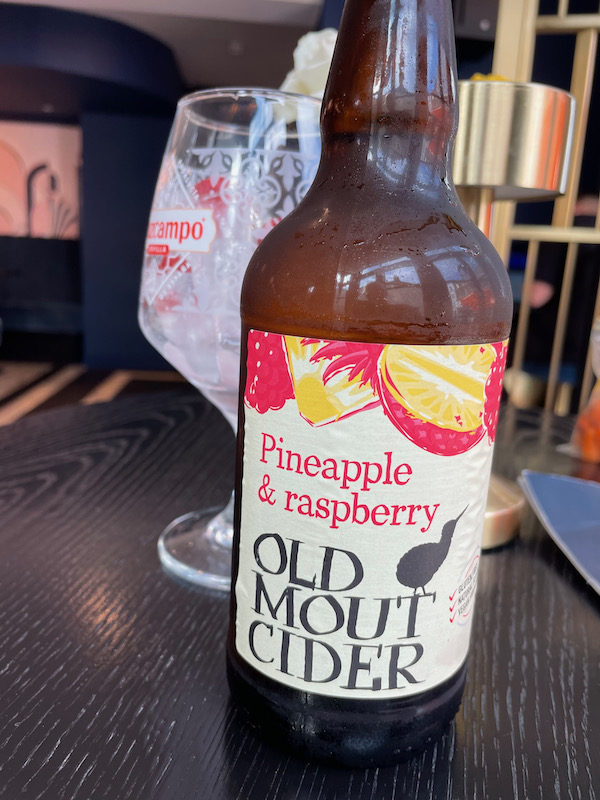
We were lucky enough to be just a few minutes walk to a puppy-friendly beach and downtown Broadstairs. We walked around the downtown area, following in the footsteps of Charles Dickens who was a frequent visitor to Broadstairs and the town figures into multiple of his books in various ways. And then just down the road was the seaside town of Ramsgate with a Royal Harbor.
Along the coastline, King Henry VIII had 3 forts built (they seem to call them castles). We visited 2 of them: first was Walmer Castle, which was more of a castle than the nearby more fort-like Deal Castle.
Probably the most well-known city in the county of Kent is Canterbury ... known for Chaucer's Canterbury Tales and the Canterbury Cathedral. The Cathedral is the oldest cathedral in England and has been the seat of the Archbishops of Canterbury since the conversion of England to Christianity that began in the 6th century with Saint Augustine. The blog for the city of Canterbury and its Cathedral is a bit long, but hopefully not too boring.
I have a few fairly short blogs that cover a few things that we stopped by that didn't take that much time. Sometimes we would have an hour or so and so we would find something to see on the way back from another place we were visiting. A couple of these were the Reculver Towers and Roman Fort, the ruins of a church that was built on the ruins of a Roman fort and the White Mill Heritage Center a smock mill that was built in 1760.
Not everything works out the way we had planned them. One thing that was highly recommended was the St. Peters Village tour, a 2-hour walk around the village of St. Peters where you meet up with costumed characters that recount various episodes of history. The information talked about the flint-stone church, conditions in a workhouse, fashionable people, and a tower used in the Napoleonic wars. Unfortunately for us, the weather was horrible that day, and they decided to bring all of the volunteers into the church. As we say there, each group of costumed characters would recount their "history", but it really wasn't the same as seeing them in front of the actual house where the character had lived. But we did get to hear the stories and took some of the extra time to get a more detailed look at the flint-stone St Peters Village Church.
Two more day-trips before the week was over. The first is the town of Sandwich where, well, the name "sandwich" was officially associated with meat between bread. And then the White Cliffs of Dover and the city of Dover. We did a walk along the tops of the "white cliffs" in the morning before heading down to the city for a little bit of a tour. Our walk down below the cliffs is at the end of this page itself (see the foggy pictures). There is also a large Castle complex there (which you will see from a distance from the cliffs) but we didn't visit for a couple reasons. First is that it may be the largest castle in England (or a close 2nd to Windsor Castle) with a variety of things to see (a Museum, The Great Tower, the Secret wartime Tunnels, the Underground Hospital, the gardens, the castle itself, and a couple churches. You really need most of the day to really see everything, which would mean we would have Lucy with us (we don't like to leave her all day alone) Dogs are allowed but only outside, so every building, we would have to have 1 person wait outside while the other went in, and then switch. This just adds a lot of time to the visit. We had thought about just going to walk around and see the various buildings that were not underground, but at £30 per person (about $40), it seemed a bit too much to just walk around the outside.
One thing that we want to look at for our next trip across the Channel is the English Heritage Overseas Visitors Pass. You can buy one for 9 or 16 days and then you can visit the English Heritage sites as a "member". With a 9-day pass costing £47 (there is a discount for 2 adult 9-day passes) and the cost of just the Dover Castle being £30 per person, I can see us buying the Overseas pass next time we are in England and trying to take advantage of the various English Heritage sites. If you are spending a bit of time in the UK and like heritage sites, you may want to look into buying a Overseas Visitors Pass, which could say you quite a bit of $$$.
While we didn't play any golf while we were in England, we couldn't be so close to 3 amazing (and somewhat famous) golf courses and not stop by. Let's just say that Santa did a bit of his Christmas shopping in August! I had a "gap day" to plan, since our UK holiday home was Friday-to-Friday but the French gîte for week 3 was Saturday-to-Saturday. We stayed on the England-side for the last night and stopped by the 3 golf courses on Friday afternoon. All of the courses are links-style courses, so you don't see many (if any) trees, but lots of uneven fairways, deep "pot bunkers", tall "heather" rough, and normally, lots of wind.
Our first stop was at the most famous of the 3: Royal St. George's Golf Club. It has hosted 15 Open Championships (the British Open), the first in 1894, when it became the first club outside Scotland to host the championship and it remains the only Open rota golf course in South East England. The club was founded in 1887 and, while many of the blind shots have been removed after recent renovations, it still has the deepest bunker in championship golf, located on the 4th hole.
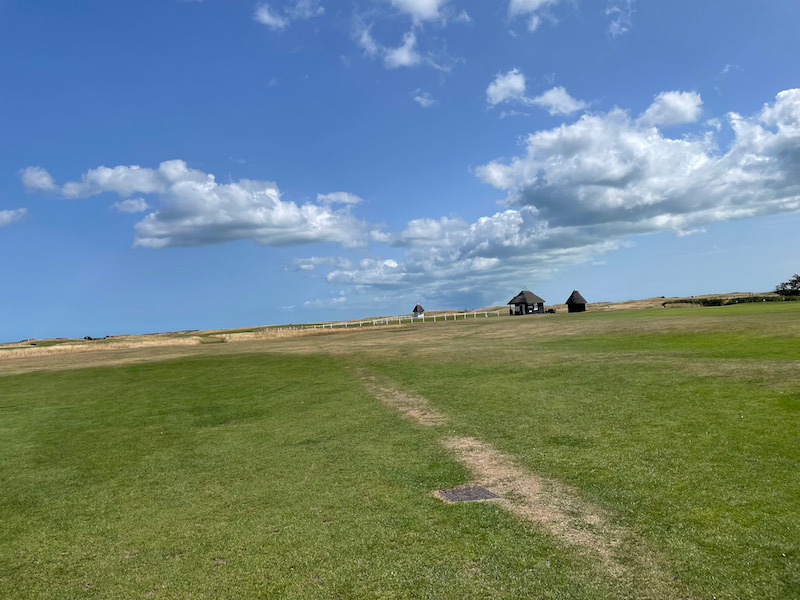
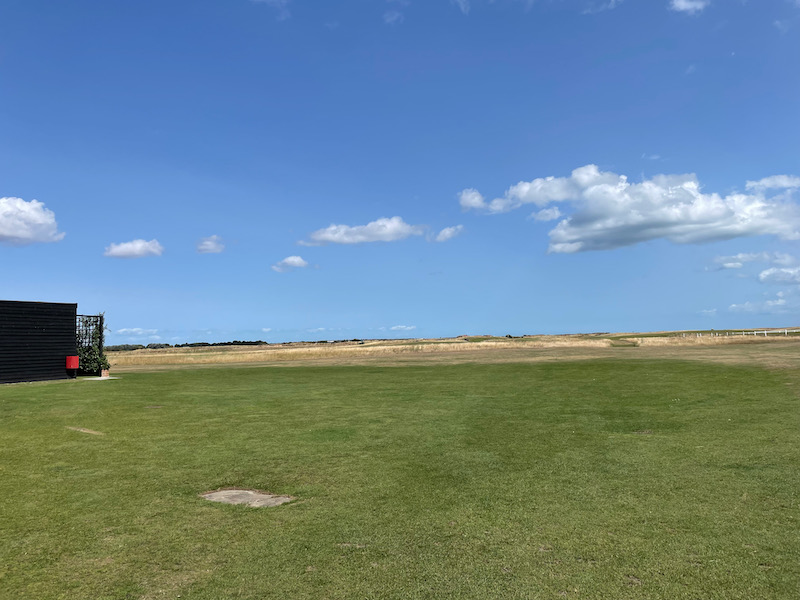
Our next stop was just next door, right alongside Sandwich Bay, to Prince's Golf Club. It was completed in 1906 as an 18-hold course and was redesigned in 1950 to be 27-holes. These can be played in three loops of 9 holes, known as “Shore”, “Dunes” and “Himalayas”, each starting and finishing beside the new clubhouse (the old clubhouse has been renovated as a hotel). Prince's hosted the 1932 Open Championship, which was won by the American Gene Sarazen. Interestingly enough, it is the only club to host The Open just once. They remain an Open Championship Local Final Qualifying course.
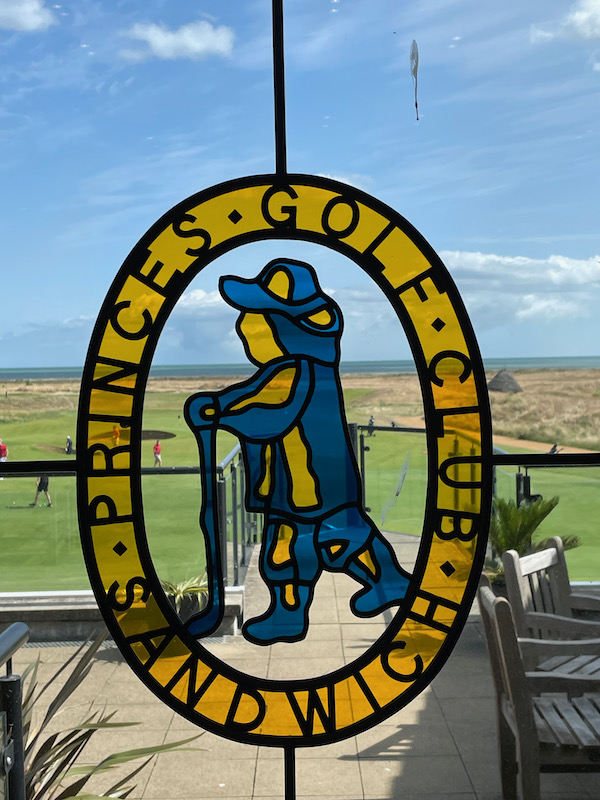
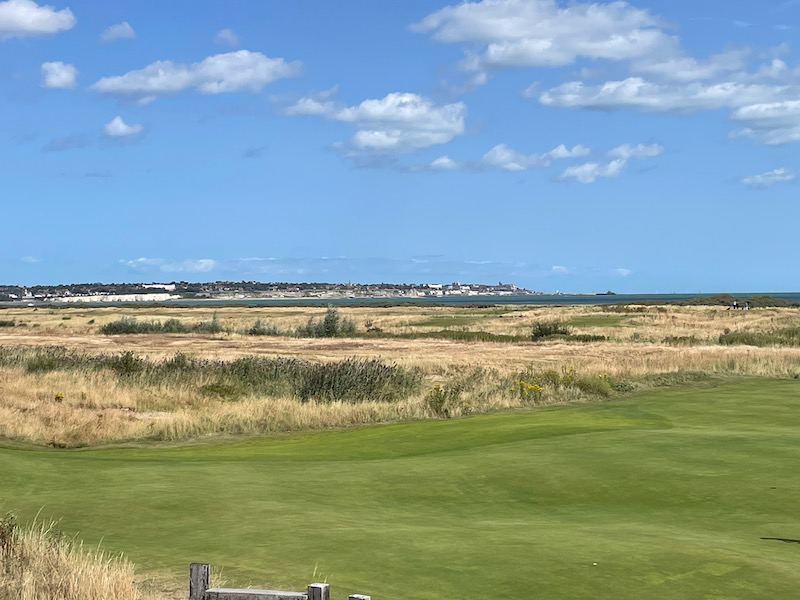
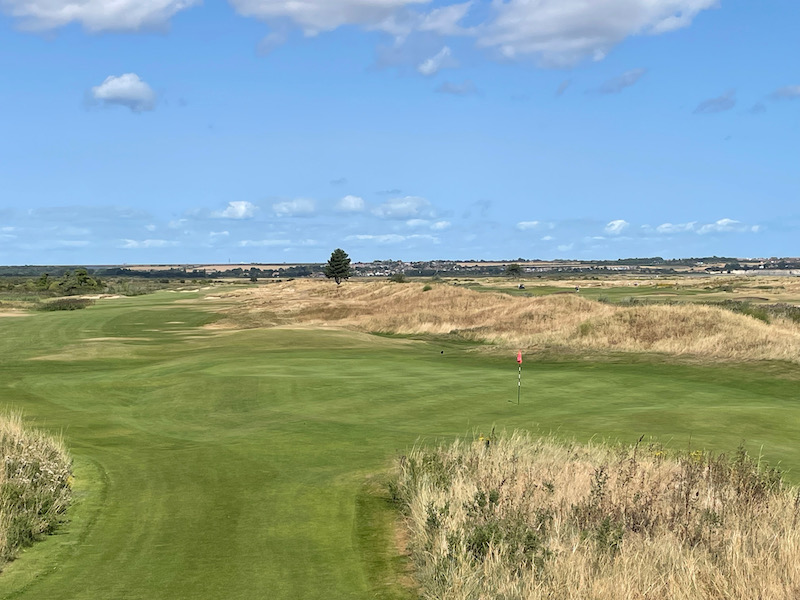
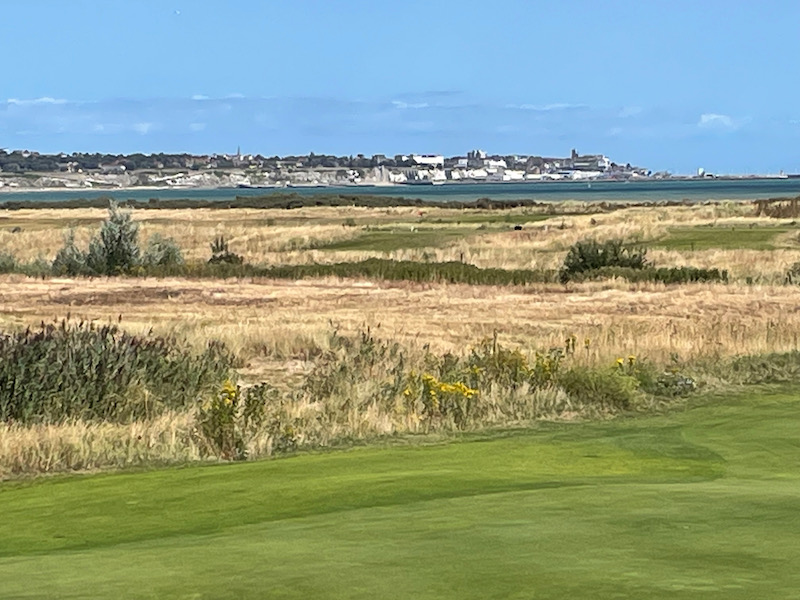
The last one was Royal Cinque Ports Golf Club. The term "Cinque Ports" is not unique to the golf course as we had seen and heard it several times throughout the week. Cinque Ports is a historic group of coastal towns in SE England and the name means "five ports". There were originally members (Hastings, New Romney, Hythe, Dover, and Sandwich), growing to over 40 during its peak in the Late Middle Ages, and now down to 14 members. The golf course was founded in 1892 and runs along the coast of Sandwich Bay, just south of Royal St Georges and Prince's golf clubs. The club hosted The Open Championship in 1909 and 1920 and was supposed to host it in 1938 and 1949 but they were both moved to Royal St George's due to high tides from the bay flooding the course. Like Prince's, they still do some qualifying for the Open Championship.
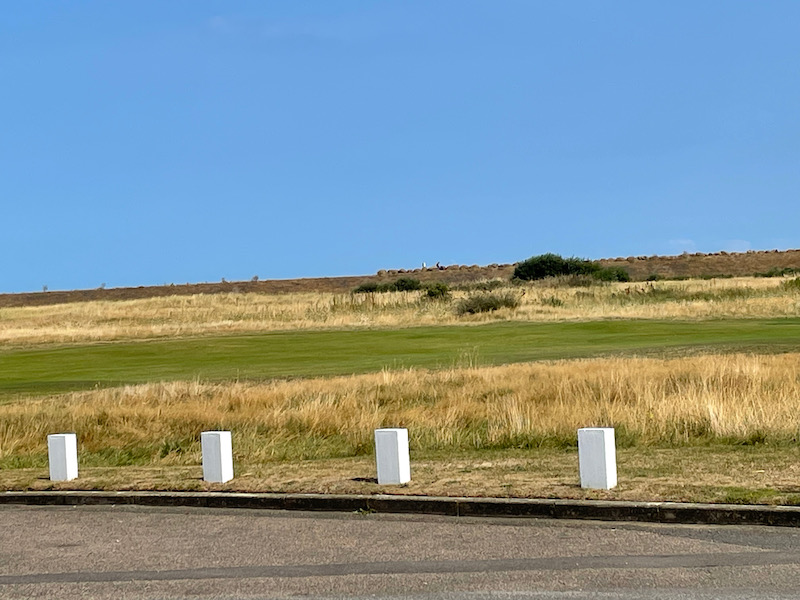
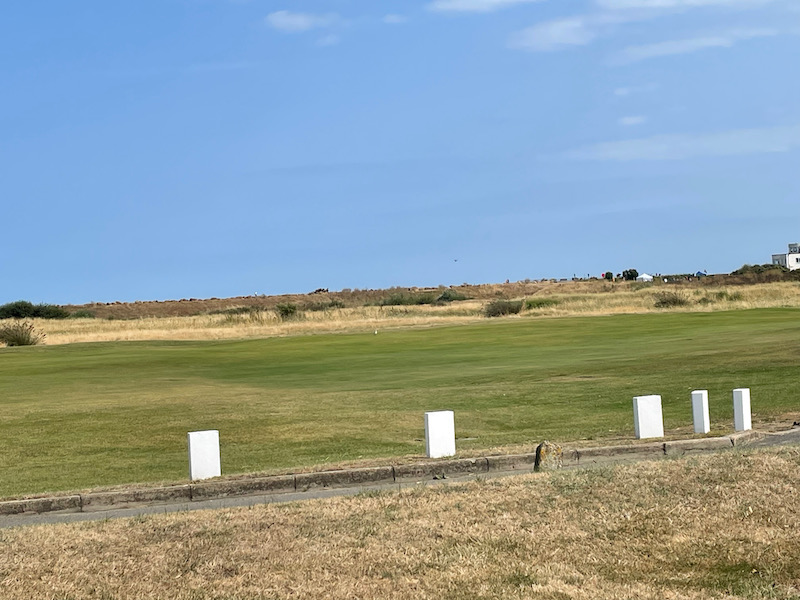
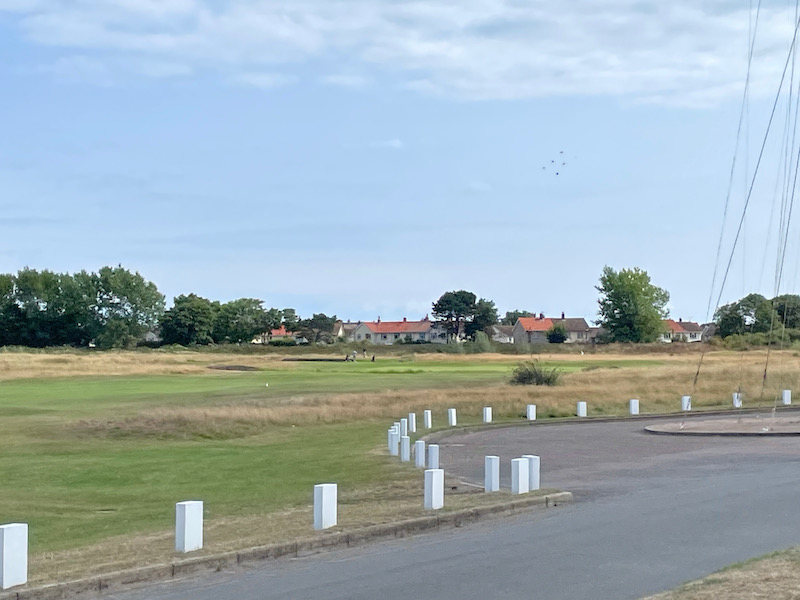
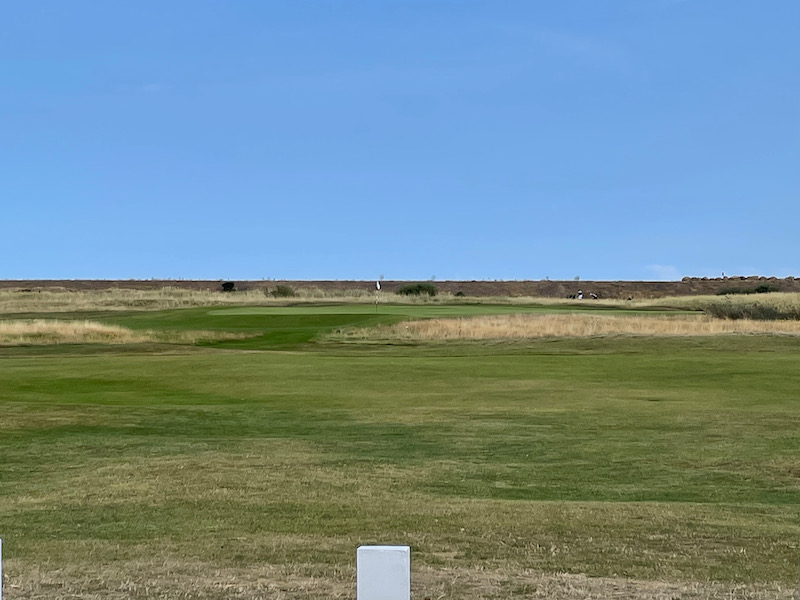
As we headed back to Folkestone and the EuroTunnel back to France, we stopped on the other side of Dover at a nature reserve called Samphire Hoe. This is pretty interesting ... the entire nature reserve was created FROM SCRATCH with what came out of the construction of the Channel Tunnel. Before the tunnel was built, the cliffs basically went into the water with just a tiny strip of beach. Almost 5 millions of cubic meters of dirt/rock/stuff extracted from the tunnels were deposited behind the 1 mile sea wall that had been built, reclaiming 111 acres of land from the English Channel. If you would like to see pictures of the progress from beginning to end, you can read about the Creation of Samphire Hoe on their website. Now, as you can see, we had horrible weather for a walk through the nature reserve. But I did try to grab some pictures to show the white cliffs of Dover behind us.
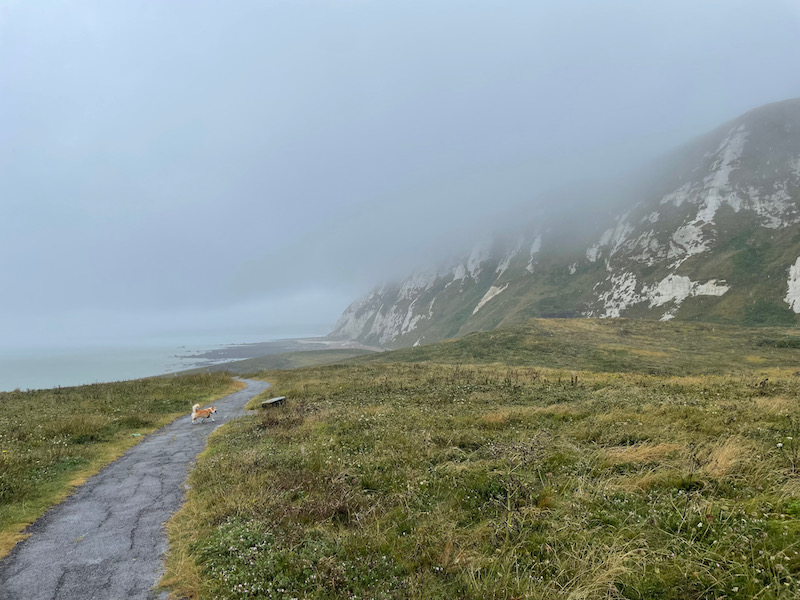
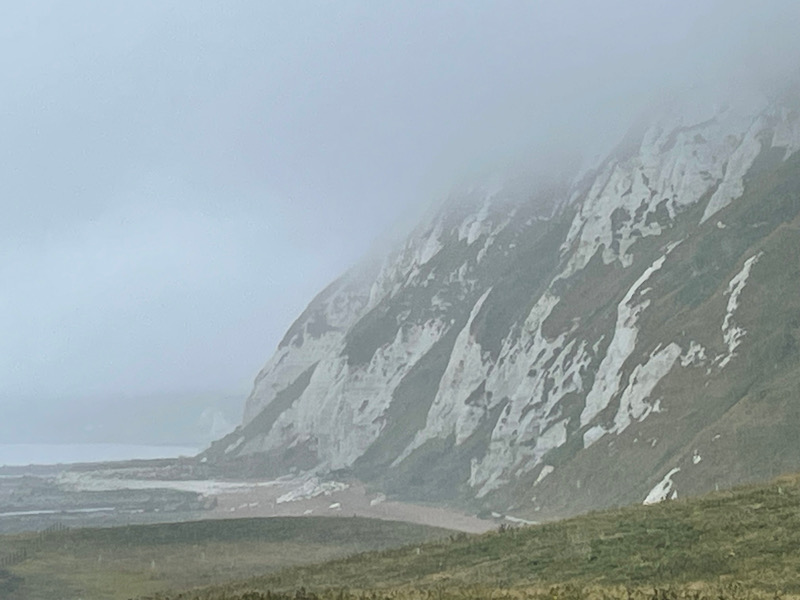
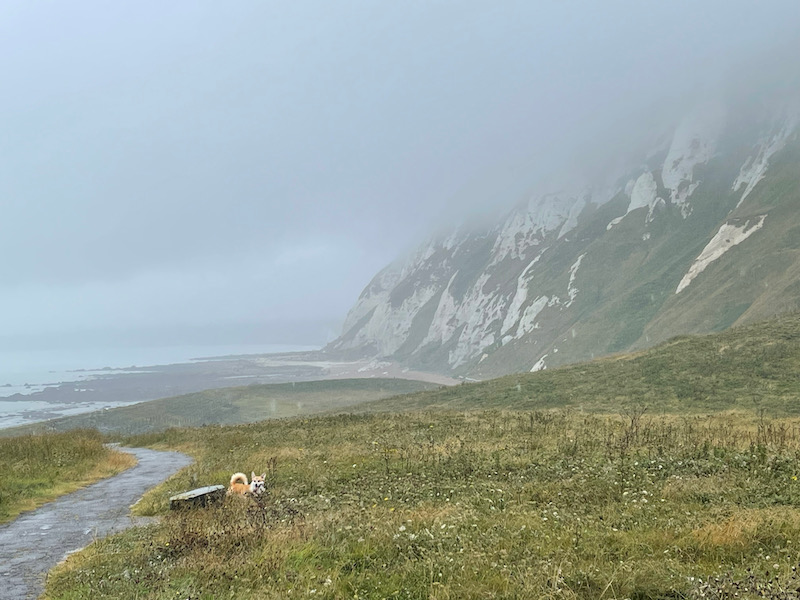
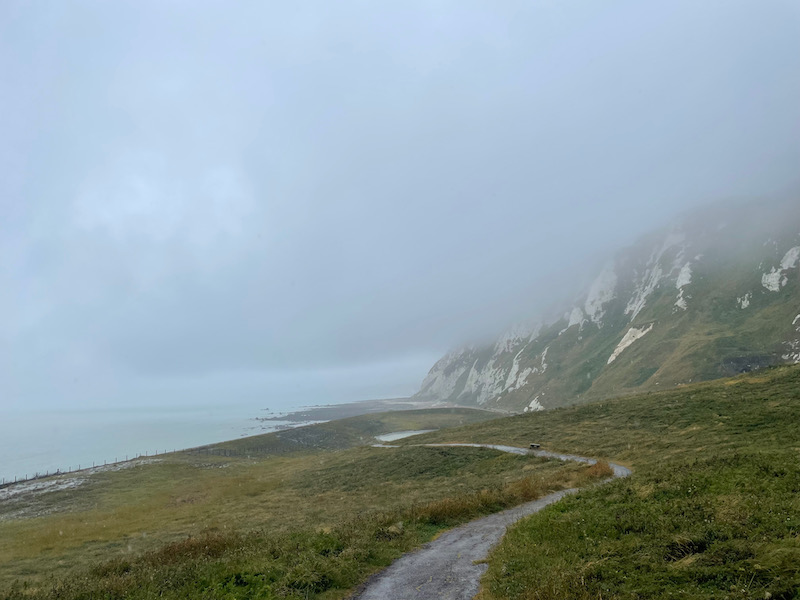
From there, we headed directly to the EuroTunnel reception instead of stopping for lunch. This ended up being a good thing because the traffic was terrible. Not sure if it was the weather (doubtful) or that it was the start of a bank holiday weekend (this was Saturday and Monday was a UK bank holiday), or that there was a lot of construction going on ... but the lines were ridiculous. We waited over 30 minutes to get to the checkin, and then still had to stop at the terminal building for the Pet Reception. We didn't bother staying there, however, and decided to go directly towards Passport Control and the trains. No duty-free shopping for me! Then into more queues and then on to the train! This time, we were on the bottom deck (last time we were on the upper deck), which I preferred (the ramp up was a bit difficult). A quick 35 minutes and we were back in France and driving on the right side of the road!